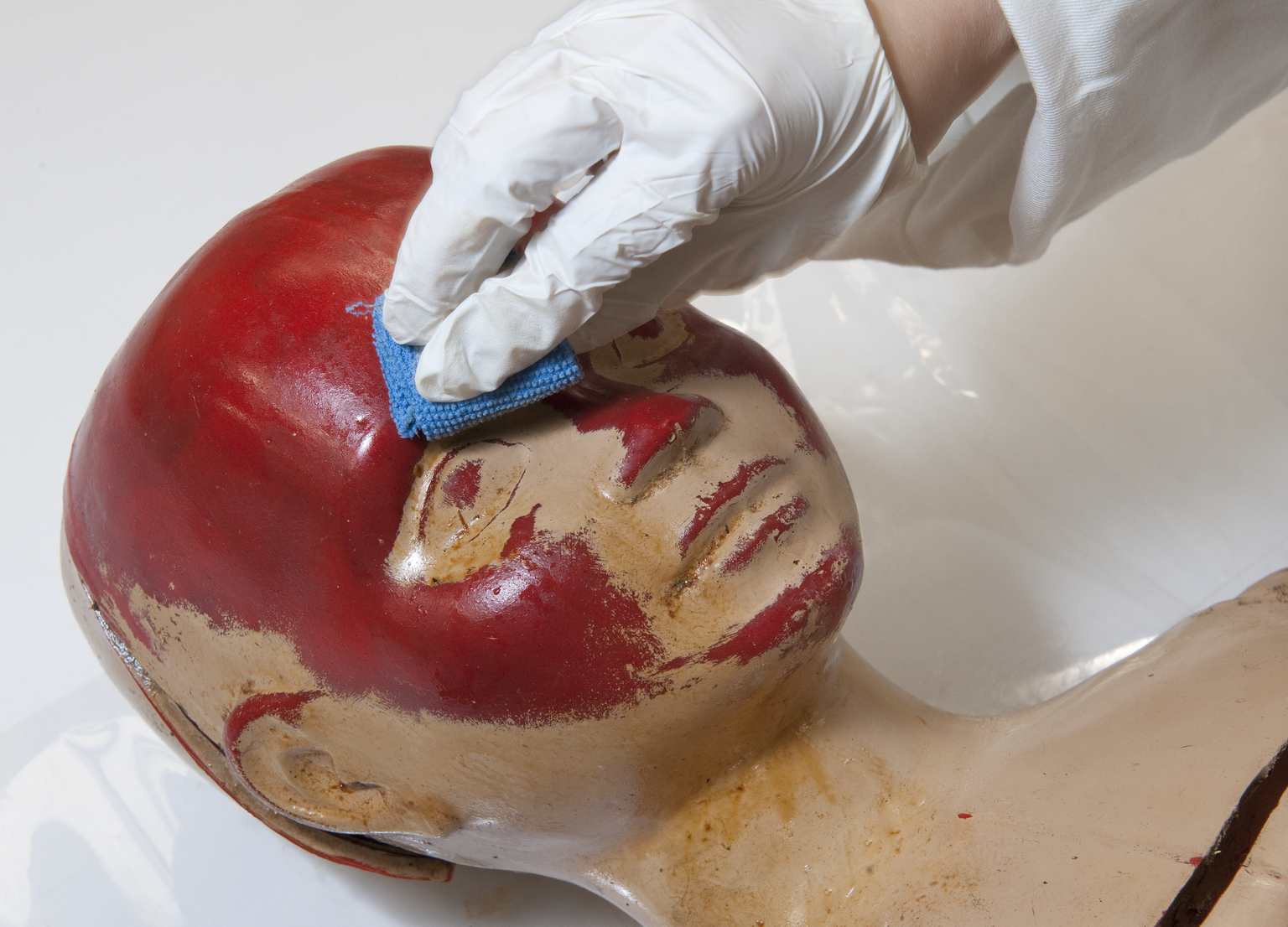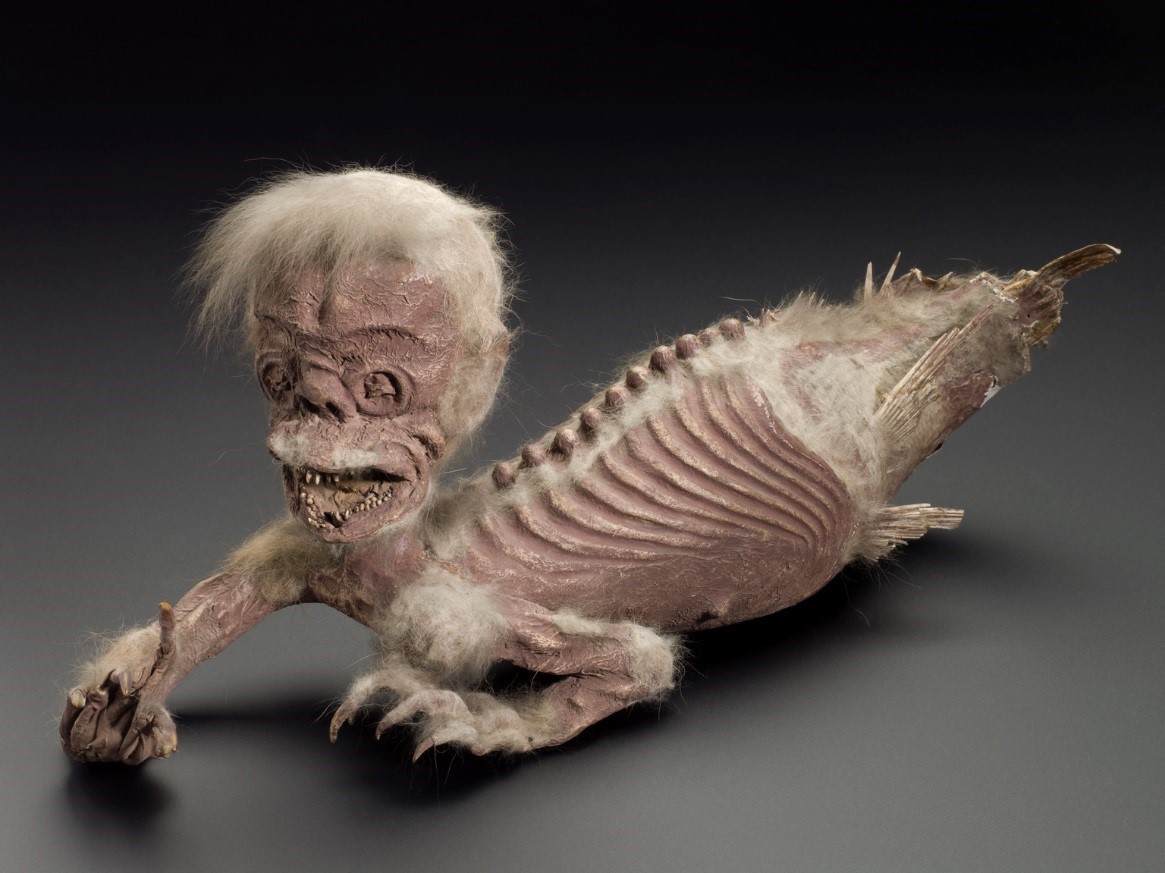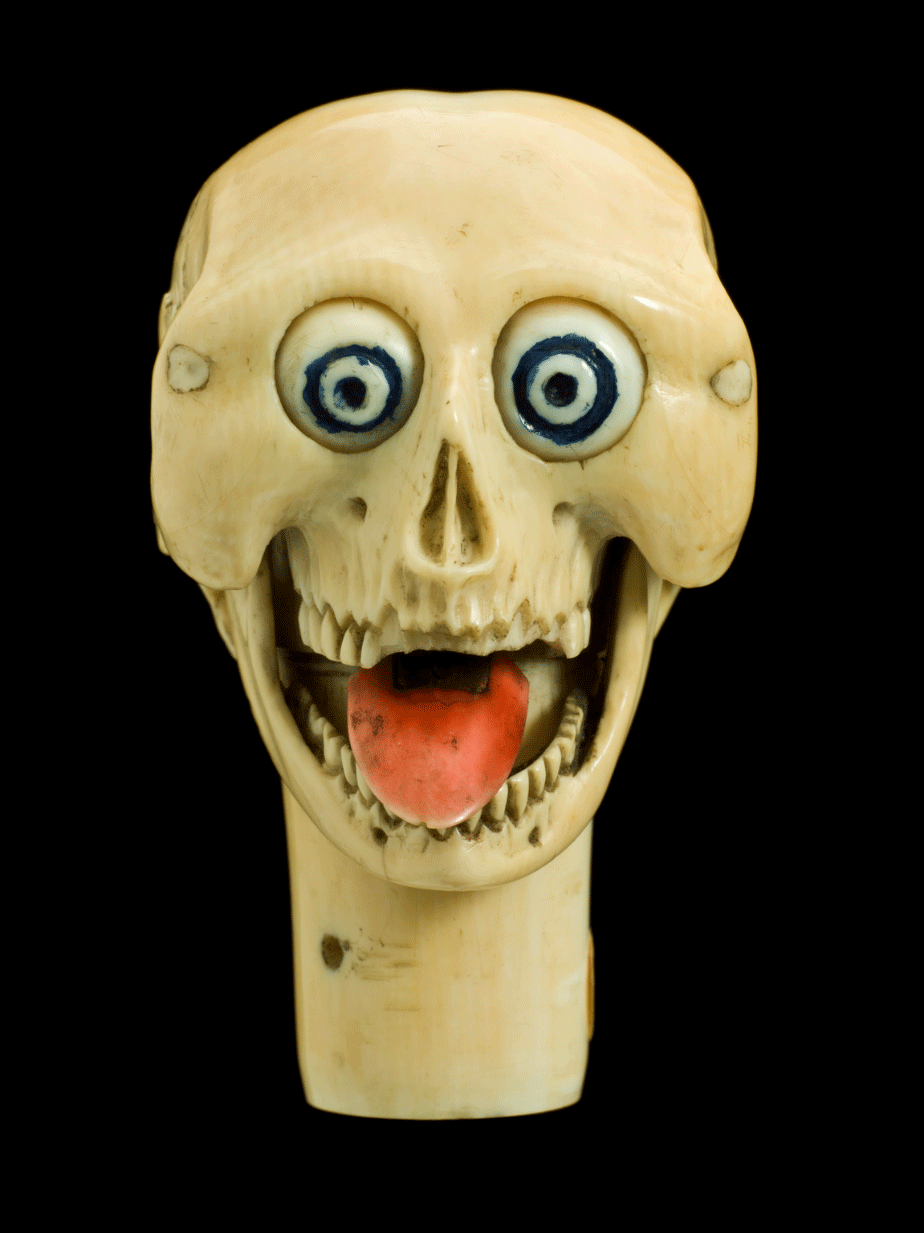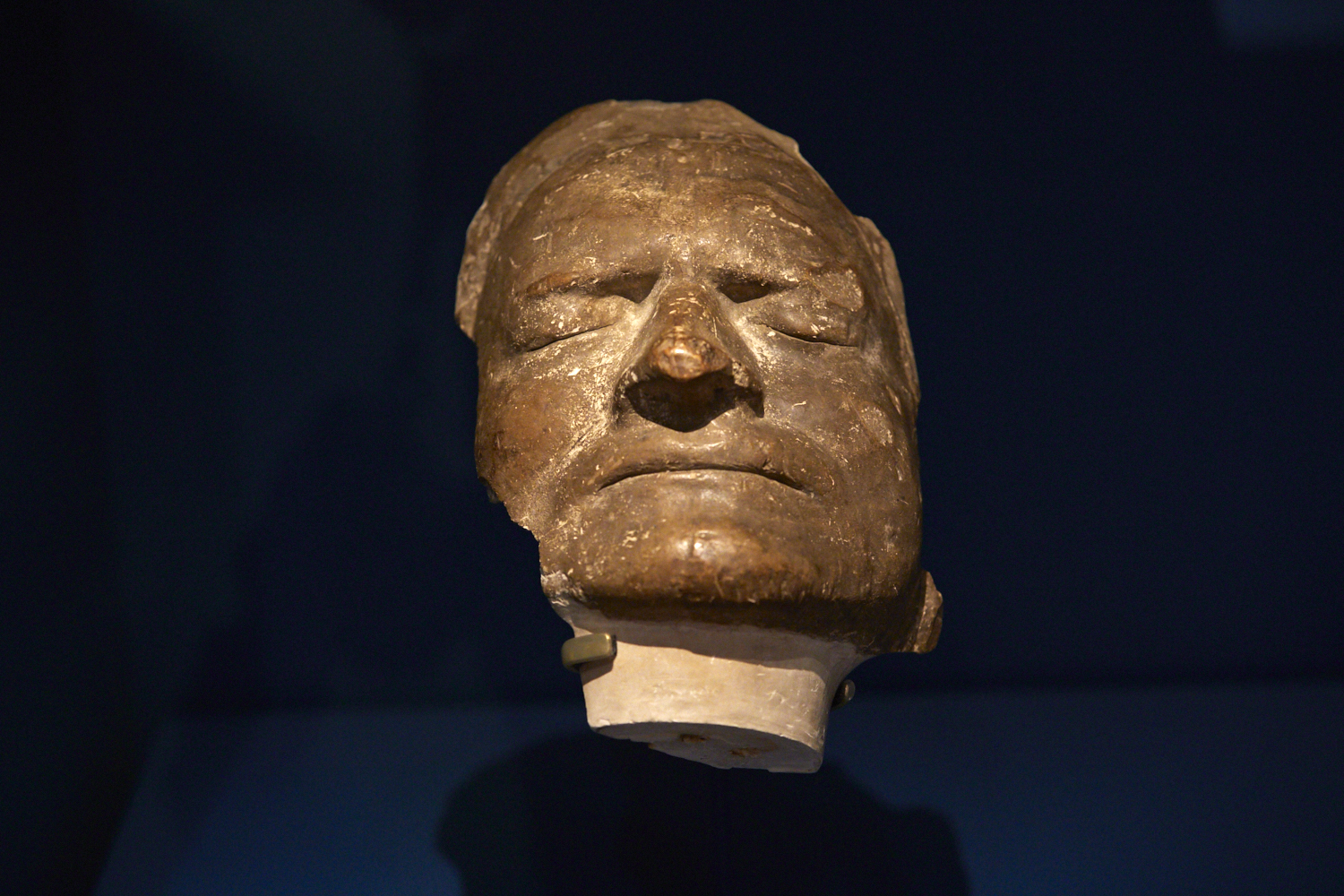Galleries you will visit: Making the Modern World, Medicine: The Wellcome Galleries, Science City 1550-1800: The Linbury Gallery, Mathematics: The Winton Gallery
Stop 1: Making the Modern World

There is something inherently creepy about mannequins and dummies, right? They often feature in horror movies and are the source of many scary stories. Here at the Science Museum, we have our own collection of crash test dummies, but the problem is that some of them are bleeding.
Yes, you read that right, some of our crash test dummies are bleeding. According to curator of medicine, Selina Hurley, the bleeding dummies are actually disintegrating and producing a red substance that spookily resembles blood.
It then falls to our brave conservation team to step in and patch them up before we give our visitors a fright.
Stop 2: Medicine: The Wellcome Galleries

A ‘creepiest objects’ list would be incomplete without mention of this creature, who we lovingly call the ‘merman’.
Head up to Level 1 using Lift D and you will enter the Exploring Medicine gallery, an exquisite showcase containing a thousand medical objects that are extraordinary and familiar.
This strange stitching together of fish, bird, and monkey, which was probably made in the 1800s, would often be seen inside gentlemen’s cabinets of curiosities and is thought to be a ritual figure.
You can see other mermen at The Horniman Museum and the British Museum.
Stop 3: Medicine: The Wellcome Galleries

Now this, this is the stuff of nightmares. Let’s just move on.
Stop 4: Medicine: The Wellcome Galleries
Leeches were used in bloodletting – a practice once carried out to treat a wide range of diseases and medical conditions.
This jar was used to hold leeches which would have been on sale to medical practitioners. They are a type of worm with suckers at both ends of the body although only the frontal sucker, which has teeth, is used to feed.
Once attached to a living body, they feed on blood. They can live for quite a while between meals, so the lid has holes in the top to allow air into the jar.
Stop 5: Science City 1550 – 1800: The Linbury Gallery

Isaac Newton was well respected during his lifetime for his public roles, including President of the Royal Society and Master of the Mint.
However, it was not until after his death that he acquired an almost legendary status.
Within hours of his passing in 1727, plaster was moulded to his face to preserve his profile. This copy was owned by the sculptor Louis-François Roubiliac, who used it to create busts and statues.
Extra stops:
Extend your tour by visiting Wonderlab: The Equinor Gallery.
Revealing the beauty of the science and maths that shape our everyday lives, this unmissable experience will ignite your curiosity, fuel your imagination and inspire you to see the world around you in new and exciting ways.
Where to eat:
On Level 0 you will find the Energy Cafe if you fancy treating yourself to lunch, or with one of our homemade cakes and an award-winning coffee.